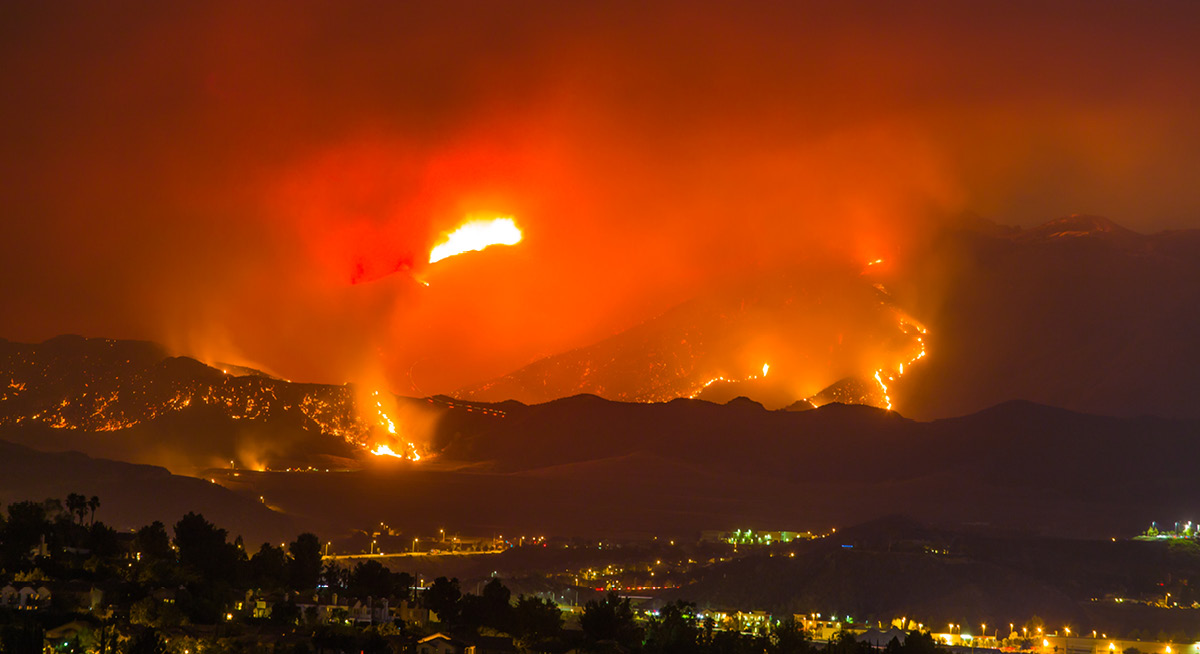
By Patrick Monahan
University scientists are exploring how nature bounces back from the wildfires that are becoming all too common in California
Last October, Molly Hayes was waiting for the evacuation order. Fires had sparked near Petaluma, where lives, and smoke filled the air. That order never came — Petaluma ended up spared by the blaze — but the experience stuck with her, and April found her trekking out to burned sites throughout Napa and Sonoma counties, armed with insect nets and glass vials. She’s one of several SF State biologists surveying the impact of last year’s widespread California fires on the natural world, looking for insights into basic biology and lessons for how to manage our precious natural resources in the wake of a disaster.
“The fires were devastating, but they provided this opportunity for study — and maybe a way to pull something positive out of them,” says Hayes, a biology graduate student at SF State.
Hayes spent the summer surveying bee populations in eight Napa and Sonoma county sites, half of which burned last year. Her advisor, Professor of Biology Gretchen Lebuhn, studied the same sites 15 years ago, providing the perfect baseline for comparison. Comparing the before-and-after may lead to insights for those responsible for managing post-fire landscapes, possibly identifying which seeds to plant to encourage the growth of healthy ecosystems with a full complement of important pollinators, for instance.
“Even though I wasn’t personally affected, having this huge event right in my backyard made me a lot more interested in how fire affects ecosystems,” Hayes says.
Some of Assistant Professor of Biology Andrea Swei’s field research sites were also endangered by the fires. Swei uses long-term study sites in parks throughout the Bay Area to track the population booms and busts of ticks and their mammal hosts. Last fall she kept her eyes glued to the maps provided by the California Department of Forestry and Fire Protection, hoping her sites wouldn’t go up in smoke. None did, but one site came close to burning.
Now she’s using that near miss to study the effects of nearby fires on ticks and their hosts. “We are curious what the impact of being next to one of these big fires is,” Swei says. “You can imagine that perhaps animals would move, or they might change their behavior.”
“The fires were devastating, but they provided this opportunity for study — and maybe a way to pull something positive out of them.”
For both Swei and Hayes, the fires put a fresh spin on their research. But for Professor of Biology Tom Parker, it was nothing new. For over 40 years, Parker has been studying plants that are shaped by fire — producing seeds that lie in wait in the soil to sprout in the post-fire landscape, which provides abundant space, light and nutrients for new growth.
This summer, Parker visited field sites in Napa and Ventura counties to see how varieties of manzanita plants with different-sized seeds fared after 2017 wildfires. Large seeds buried in the soil are more likely to survive a blaze, he explains, but their size also makes them a target for rodents. “If you have a bigger seed, you have a bigger chance of establishing, but you have a bigger chance of being eaten. You’re easier to find,” Parker said.
Because of their size and closeness to urban areas, last year’s fires still weigh heavily on the minds of many Bay Area residents. Unfortunately, the wildfires were no fluke: The 2018 fire season looks like it will outpace last year’s. And the increase isn’t likely to stop anytime soon, as climate change will probably increase the frequency of fires in the state.
“We’re witness to these really big, global changes that have a trajectory that we can’t stop,” says Swei. “We can try to slow it down but we need large, coordinated governmental effort for that. The best we can do as scientists is to try to understand some of the impacts.”